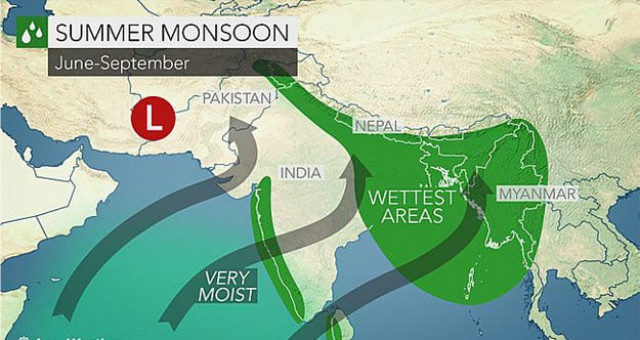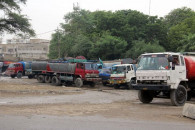El Niño may aggravate drought situation in Pakistan
Below average water temperatures from Somalia to Arabian sea and El Nino may hinder the arrival of monsoon in Pakistan

PHOTO: ACCUWEATHER
 PHOTO: ACCUWEATHER
PHOTO: ACCUWEATHERBelow average water temperatures from Somalia to Arabian sea and El nino together may hinder the arrival of monsoon in Pakistan or lessen its impact in much of Pakistan and western India during July and August.
These areas are home to significant amounts of crops and agriculture are under a dangerous drought threat, as they are likely to receive many days of heat.
Read: A killing heat
While during a usual monsoon season rainfalls and tropical system cool the region post the heat buildup, El nino alters sea surface temperatures in the tropical Pacific causing above average number of typhoon which in turn reduces tropical activity and reduces rainfall in the upper part of the Indian ocean.
A complex and difficult to predict rain system called Madden-Julian Oscillation (MJO) which is ‘a pulse of showers and thunderstorms that tends to migrate from west to east around the equatorial regions of the globe’ may strengthen the monsoon slightly.
"Even if another pulse was to develop in the region late in the summer or during the fall, it may be too late to turn the drought around in Pakistan and northwestern India," Nicholls said.
Read:Climate change: Ministry forms advisory body
 PHOTO: ACCUWEATHER
PHOTO: ACCUWEATHERTemperatures may reach as high as AccuWeather RealFeel® of 100 F or higher due to the flow of humid air over much of the region and spotty storms.
“The weather patterns that will follow due to this El Nino effect can sometimes be very dry and or even very wet. There is also the likelihood that in future, floods and droughts might occur at the same time,” according to Chief Meteorologist Dr Ghulam Rasul
In 1997-1998, El Niño resulted in abnormal heavy snowfall, followed by the country’s worst and longest drought that stretched for four years in Balochistan, lower Punjab and K-P.
The 2009 El Niño resulted in a severe drought followed by devastating floods in 2010-2011.
The article originally appeared on Accuweather



















COMMENTS
Comments are moderated and generally will be posted if they are on-topic and not abusive.
For more information, please see our Comments FAQ